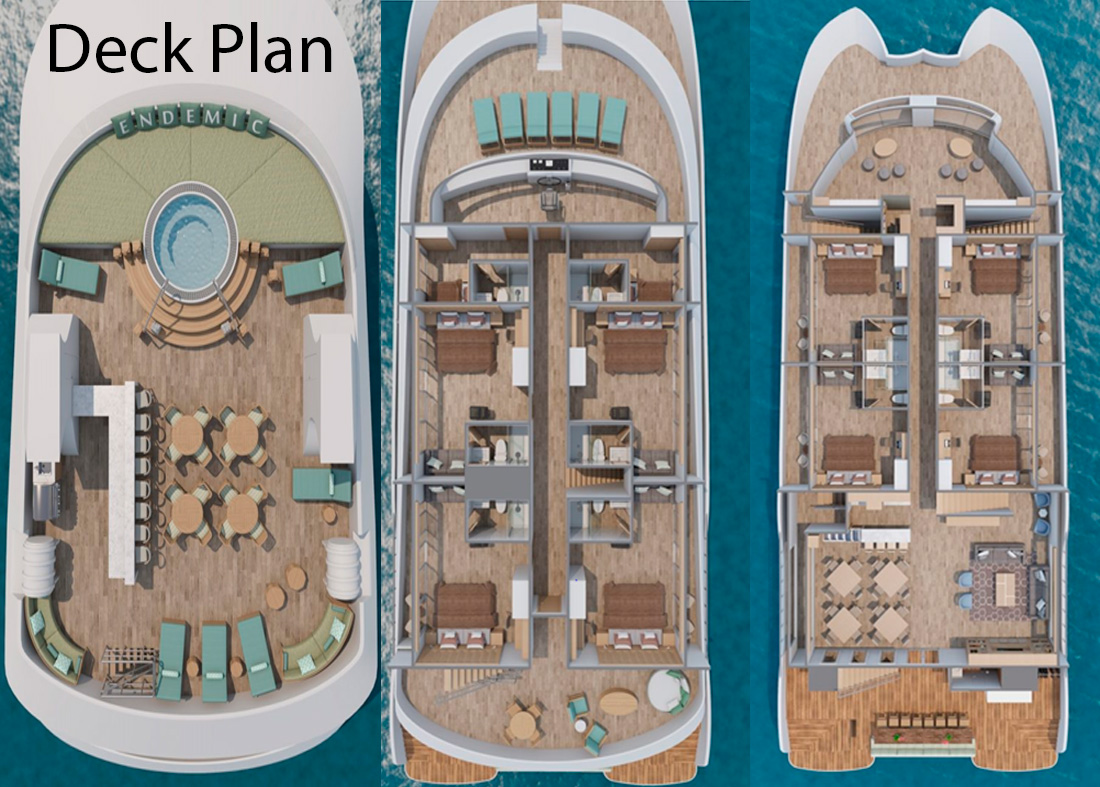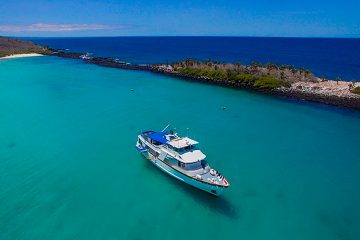RATES INCLUDE
•Transfers airport/yacht/airport in Galapagos
•Airport reception and assistance
•Double or single accommodation
•Guided expeditions according to the itinerary
•Top bilingual National Park guide (English / Spanish)
•Cruise Service Officer
•Activity daily briefing
•All meals and snacks
•Soft drinks and juices
•Glass of house wine for dinners
•Captain’s welcome and farewell cocktail
•Supplied expedition gear
SUPPLIED EXPEDITION GEAR
•Transparent sea kayaks
•Stand-up Paddle boards
•Snorkeling equipment (mask, snorkel & fins)
•Wet suits
•Excursion Bag
•Water container
•Expedition Binoculars
•Action Camera
•Micro SD Card (Surcharge)
RATES DON’T INCLUDE
•Round trip to Galapagos
•Galapagos National Park Entrance fee ($100 – subject to change)
•Transit Control Card ($20 – subject to change)
•Alcoholic and bottled beverages
•Gratuities for guide and crew
•Travel and health insurance
•Micro SD Card
RATES REMARKS
•Prices in US dollars
•Rates are subject to change in case of additional taxes, fuel increase or any other unforeseen circumstance.
•Suites have king size beds or two twin size beds.
•Rates per person and based on a double occupancy.
•New surcharges will be informed in a timely manner.










 WhatsApp us
WhatsApp us